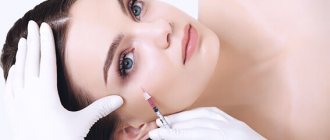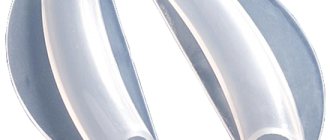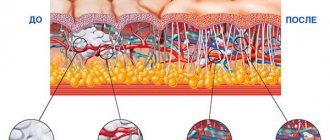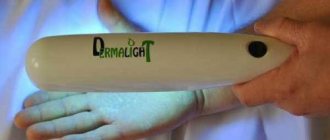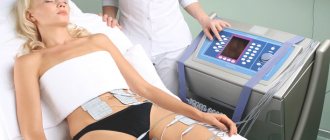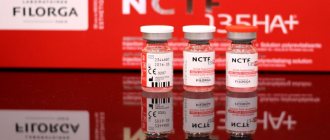Changes with age affect the entire body. In particular, the skin changes. Women use different options to restore beauty, and SPRS therapy is far from the last place. The procedure is safe and does not cause pain.
Why does skin lose its healthy appearance? With age, the number of fibroblast cells decreases significantly. The composition contains collagen, elastin and hyaluronic acid. These elements are necessary for elasticity and also nourish cells. All this is important for cell renewal.
What does SPRS therapy involve?
A set of natural restoration procedures based on the use of your skin cells – fibroblasts.
SPRS fibroblast therapy is the only method that eliminates not only the external manifestations of aging, but also the aging factors associated with the structure of the skin. With age, the amount of connective tissue decreases significantly (by almost 40%). The natural recovery technique makes it possible to compensate for the lack of important elements in the option of introducing active components. Moreover, these elements are not foreign, but our own. They take root well and produce important elements for the skin.
The Service for Personal Regeneration of Skin difference
SPRS therapy is a technique for correcting age-related skin changes. Other methods of rejuvenation are aimed at stimulating cells. With age, their number decreases significantly. The innovative solution SPRS, on the one hand, is aimed at changing the external defects of the body, and on the other hand, restores the structure from the inside.
The use of therapy eliminates the formation of allergies and other adverse reactions, since the client’s own cells are used for the procedure. It guarantees a long-lasting natural rejuvenation effect due to the correction of fading factors, and not just the elimination of the consequences themselves.
SPRS therapy is effective:
- to correct changes associated with age (areas of different parts of the body, including the face, neck, hands and décolleté);
- reduces the number of deep wrinkles;
- to eliminate scars that remain on the skin after acne problems;
- acceleration of renewal after peeling;
- used as preparation for surgical interventions, as well as after operations;
- for rapid tissue restoration;
- as a preventive measure against wilting.
Causes of age-related changes
Before we talk about what SPRS therapy is, we need to take a closer look at the cause of skin aging. The unpleasant changes that we see (wrinkles, ptosis, gray color) occur at the cellular level, they are caused by a deficiency of fibroblasts responsible for the synthesis of substances such as hyaluronic acid, elastin and collagen fibers.
The artificial introduction of the listed components brings temporary and weak results; often the body rejects foreign substances, and they themselves are unable to establish themselves in the dermis for a long time.
Does age matter?
After thirty years of age, skin begins to fade. The aging process affects everyone differently. Much depends on a person’s diet and whether he takes care of himself. It is good when a person does not smoke or drink alcohol, but takes care of his body using protective products against ultraviolet rays and consults a doctor for the slightest skin diseases.
You can collect cells in advance and store them in a special storage facility for biological material (cryobank). Moreover, biomaterial can be stored for a long time. Therefore, you can use your cells for recovery even after a couple of years.
Doctors and cosmetologists advise using recovery treatment after forty years and older.
Most popular: List of inexpensive available analogues of Contractubex
Advantages and disadvantages of the procedure
Cellular rejuvenation is an expensive therapy; it is not available to every patient; its high price is perhaps its only drawback. Those units who had the opportunity to evaluate the positive changes after its implementation note the following:
- Effectiveness, achieving changes by eliminating their cause, rather than simple mechanical intervention.
- Efficiency of obtaining results (noticeable after the first injection session).
- Safety (no risk of complications, rejection or allergies).
Skin rejuvenation procedure process
The SPRS therapy cell restoration technique includes several stages. Let's take a closer look at the stages, including preparation:
- It is necessary to consult a doctor to determine the need for the technique. Therefore, at this stage it is necessary to decide whether a person needs it. The doctor determines age-related changes.
- At this stage, the doctor must take a piece of biological material (skin) in order to later use it to introduce fibroblasts into the skin. The doctor should also take blood from a vein.
- At the third stage of SPRS therapy, the biological material is sent to a medical laboratory for further research and processing. In the laboratory, the number of connective tissue cells in the body is determined. The required number for further restoration and the formation of an artificial substance is also calculated. The material is left to be stored in the refrigerator at the specified temperature.
- Subcutaneous administration of the purchased serum. The administration process may take sixty minutes. What can the patient feel during the procedure? There may be pain when injecting. The doctor should make sure that specific areas are given anesthesia before starting.
Treatment with SPRS therapy is carried out in two or three sessions with breaks of approximately 2 months. The result is not immediately noticeable, but the skin takes on a healthy, natural appearance, and most importantly, a rejuvenating effect is achieved.
The duration of the effect is from 3 to 5 years, then it can be done again. Patients are interested in how long it should take from the moment the material is taken to begin the administration process itself. Each person's skin reacts differently to injury, and therefore cell activity is different. For example, in mature women, cells may be more active than in young girls. So, functionality is a purely individual phenomenon.
The sampling can be done not only for recovery, but also to find out the biopotential of fibroblasts.
Activity is an important indicator that expressively reports on the process of withering. It is by the results of fibroblast activity that you can find out what the result will be after the procedure and compare it with the condition of the skin before SPRS therapy.
Contraindications
Fibroblasts are not recommended to be administered by injection during periods of exacerbation of protracted illnesses, colds, viral infections accompanied by high body temperature. Contraindications include decreased functioning of the immune system, malignant tumors, infections and protracted illnesses at the acute stage. It should not be used on pregnant women or while breastfeeding. Also contraindications include people who have the following pathologies and disorders in the body:
- inflammatory diseases of connective tissues;
- impaired glucose absorption;
- kidney disease, immuno-inflammatory nature;
- increased destruction of red blood cells;
- a chronic non-infectious disease (dermatosis) affecting the skin.
Before carrying out SPRS therapy, a preparatory consultation with an expert is required to identify personal contraindications.
Most popular: Eight effective treatments for hand skin rejuvenation
Indications
Cellular rejuvenation has a wide range of indications. The procedure is relevant for any age-related changes in the skin of the face, as well as the hands, neck and décolleté. Cosmetologists recommend fibroblast injections in the following cases:
- decreased thickness and elasticity of the skin;
- unhealthy gray complexion;
- soft tissue ptosis;
- wrinkles and folds (age-related or facial);
- scars;
- increased pigmentation.
If necessary, the procedure is used to restore the skin after aggressive external intervention (peelings, resurfacing).
Injection of fibroblasts into the area of the arms, neck and décolleté
What it is
Fibroblast is the most valuable cell of connective tissue; they play a key role. Its name is formed by two words: fibra - fiber, blastos - sprout. Fibroblasts are formed from stem cells, which have an oval or round shape with processes. Fibroblasts form connective tissue, its framework, and regulate cellular interaction.
The main role of fibroblasts is the metabolism of intercellular substances. The mechanism of action of fibroblasts is endowed with enormous power, which is used in cell therapy. Fibroblasts produce procollagen, proelastin, fibronectin, etc. Together, these elements make it possible to completely regulate cellular activity in tissues. Fibroblasts stimulate connective tissue growth factor, which stimulates collagen synthesis and the formation of new fibroblasts.
Taken together, this represents a system in which many positive feedback loops are created.
Numerous attempts to cultivate fibroblasts in vitro (in vitro) have been crowned with positive results. Cultured fibroblasts retain all the basic properties of the primary culture.
Fibroblasts and fibrocytes
Compound
Fibroblasts are obtained from skin biopsies in two ways: using enzymatic treatment and mechanical methods. After obtaining the primary culture, it is washed with saline (containing an antibiotic) and treated with a solution of a special enzyme, collagenase (or trypsin). Next they follow the algorithm:
- Freed from the matrix,
- Sedimented by centrifugation,
- Washed away from enzymes
- Cultivated in a CO2 incubator.
The result is a heterogeneous population in which fibroblasts are located at different stages of their development: dividing, maturing, mature, etc. Fibroblasts are divided into two types, which have different rates of division and growth. The properties of fibroblasts are influenced by several factors:
- Cultivation method
- Number of passages
- Serum type
- Environment type
- The area from which the primary culture was collected is
- Donor age.


